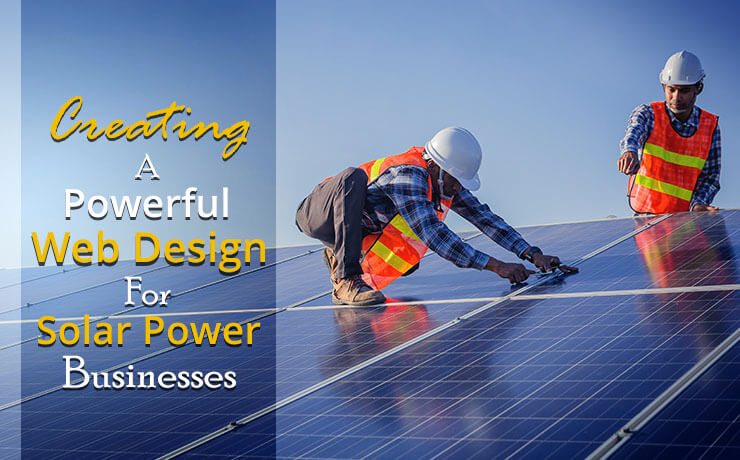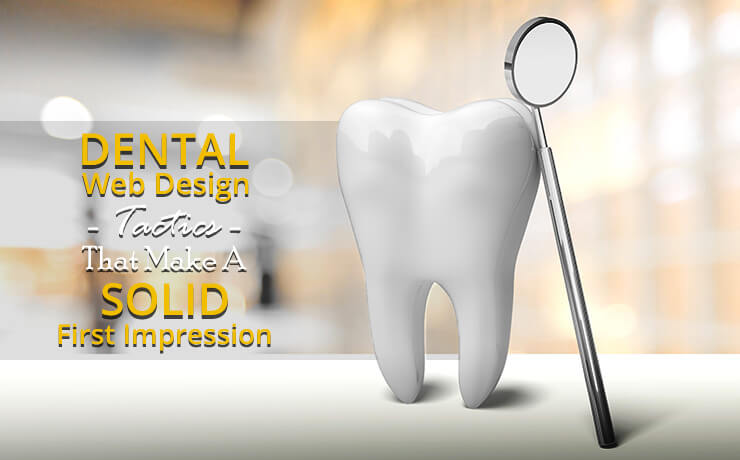
A solar power business website is considered to be the backbone of a digital marketing strategy. It allows solar contractors to connect with both B2C and B2B prospects at all stages of the buying process. With the right solar power website design and content, you can highlight the advantages of doing business with you. A strong solar company website should have specific marketing goals, such as telling visitors what they can do and learn from you.
For most homeowners and business owners, installing a solar power system can be a significant investment. Therefore, it is important to establish a high level of trust from the get-go. This means that navigating your solar power website must be as seamless as possible, mobile responsive, feature a modern design, ensure everything loads fast, as well as display relevant information and attention-grabbing calls-to-action (CTAs). In this post, we will cover various elements that go into making a solid solar power website design.
Create a Visually Appealing and Easy to Use Solar Power Website Design
For starters, solar power business owners should aim to make the look and feel of their website to be as impressive as possible. Your corporate website should be professional and welcoming and is consistent with your brand’s overall look. To avoid having a cluttered web design, it is important to leave an ample amount of blank space. Consider breaking up large blocks of text with relevant graphics, photos, and bullet points. When it comes to using images, ensure that you choose high quality ones, not low-res images or generic stock photos. Videos can help make a solar company website design look more appealing as well. This type of content catches visitors’ attention quickly and offers easy-to-digest information about your company.
Because your solar power website is ultimately designed to provide visitors with information, it needs to be easy for them to find and navigate. The website navigation structure should be clearly labeled, allowing visitors to find what they are looking for in two clicks or less. In addition to reducing the number of steps needed to find a page, you should also use web design elements that allow pages to load as quickly as possible. A page should not take more than three seconds to render because visitors and potential leads may abandon the site and head to a competitor.
Always Use Responsive Website Design
Solar power consumers are increasingly using tablets, smartphones, and other mobile devices to browse the Internet, especially searching for products and services. This means that your corporate website must be accessible and functional via a wider array of devices. Using a responsive web design is the best way to accomplish this goal. This type of web design allows your website to automatically adjust to the screen that they are currently viewed on without losing important design elements. Studies have shown that mobile-optimized websites have a higher percentage of converting visitors to customers.
Welcome Visitors with an Impressive Solar Power Homepage
Your solar power company’s homepage and its content should clearly articulate its mission, what it offers, and various actions customers can take upon arrival. Depending on your company’s main buyer personas, the text on the page should resonate well with educational institutions, auto dealers, urban dwellers, upscale homeowners, and much more. Business owners can also establish trust by showcasing short videos of success stories or other strong social proof such as customers’ testimonials.
Write Readable and Compelling Content to Engage and Attract Visitors
After you have finalized the site’s design aesthetic, you should start creating content that truly connects to your prospects. Industry-related and educational materials can be a powerful addition to your online marketing efforts by attracting leads to the website. Business owners can provide valuable, readable, and relevant content, such as white papers, infographics, e-books, and blog posts. These types of content go a long way toward increasing the site’s domain authority (DA). As you can see DA is inextricably linked to SEO-optimized content.
Now, you should not just stuff your web pages with content. You need to use a language that speaks most effectively to each buyer persona. A one-to-one, conversational style of writing tends to land well among homeowners and businesses alike. In addition, keep the content concise and customer focused by using “you”s as much as possible. Beware of long pages of unbroken text as it is the bane of the customer experience. Visitors and potential leads should be able to scan each page in a few seconds and get the gist of it before diving in further for more information. It is recommended that solar businesses utilize easy-to-read headings, subheadings, and bullet points. Alternatively, you can insert Read More links and collapsible text sections.
Other content marketing best practices include:
- Avoid using confusing, technical, and jargon-heavy language in the text.
- Adding interesting quotes and images to break up the text, as well as highlight key info.
- Using enough white space, the right font size, and coloring for an uncluttered look.
Build Trust with a Well-Designed About Us Page
About Us and Contact Us pages serve as important points of access for visitors to learn more about your company and build trust. Once again, utilize a language that is free of business clichés and industry jargon. Get more personal by showcasing actual photos of your company’s team members, whether individual department or group photos. Ideally, you would want at least one photo featuring your company’s headquarters as the backdrop. By sharing names and faces of the people behind your company, your prospective customers will feel more comfortable knowing who is installing solar panels on their roofs. Don’t forget to include information that allow visitors to contact your company. In addition to email addresses, phone numbers, and online contact forms, ensure that social media buttons are prominent throughout the site.
Showcase Ongoing or Completed Solar Power Projects
Success stories, case studies, and portfolios are excellent materials you can use to prove to visitors that you run a trusted solar power company. Do not hesitate to showcase completed projects, offer useful tips, and discuss your capabilities and ongoing solar projects in the locations you serve on a daily basis. In some cases, it is significantly easier to explain this information through photos and videos.
Your content, however, should also be substantial enough for individuals looking for technical specifications and other factual information. For example, you may need to explain how much power a certain solar panel system generates, how much money it can help homeowners or business owners save, emissions management, energy regulations, and much more. Feel free to share useful information that can help establish your solar company as a valuable resource.
Include Attention-Grabbing CTAs (Call-to-Actions)
Business owners need to encourage their visitors to take certain actions toward becoming customers, in order for their website design to be effective. An excellent way is to display easily accessible CTAs at all stages of the buyer journey. These links may be a button to schedule a consultation or links to explore solar power financing solutions or different types of solar systems. Depending on how far a customer is in the sales process, CTAs can encourage them to call your business directly, fill out a quote form, or subscribe to a newsletter. Like other parts of the web design, CTAs must be attractively designed and contain compelling, action-oriented language.
A polished website design for solar power businesses go a long way into making a lasting impression with prospective customers. Make sure that you work with the right digital marketing agency to design and develop your business website.
 Free
Consultation
Free
Consultation Free
Google Ads Audit
Free
Google Ads Audit








